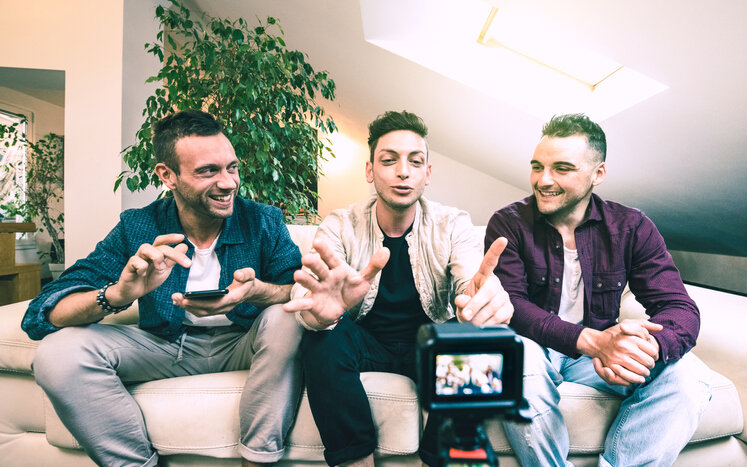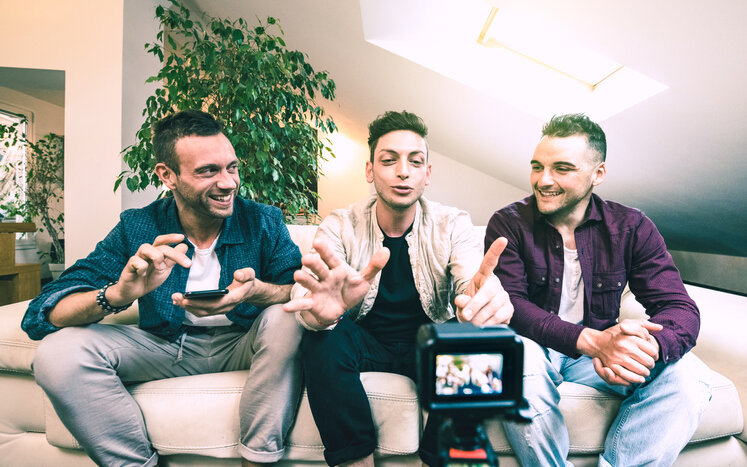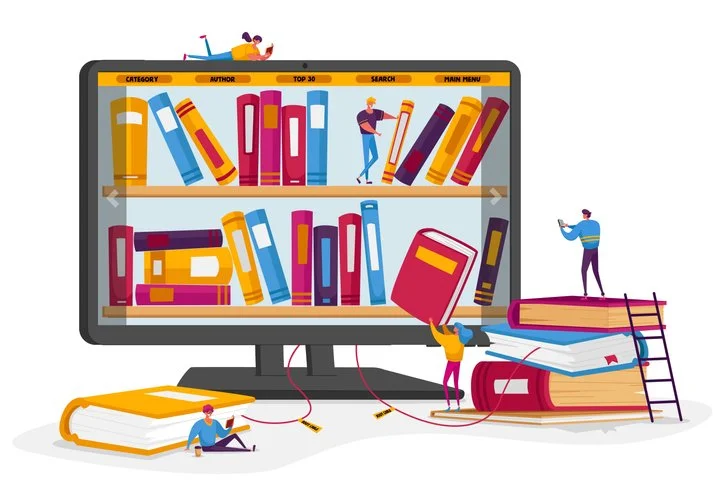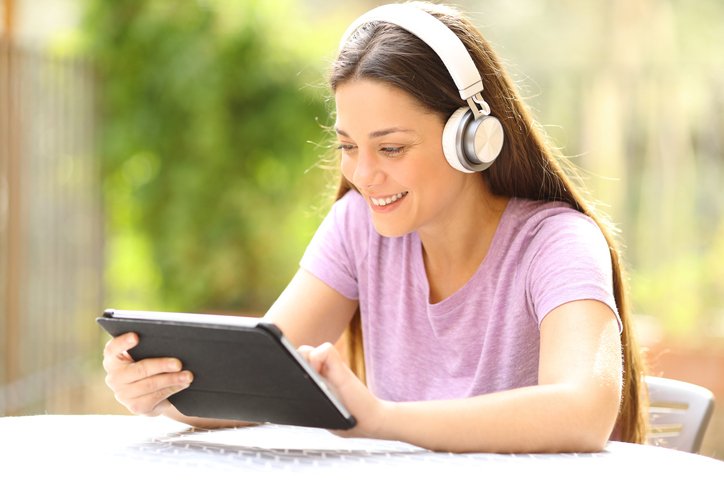Everyone at home could participate in this activity. Strengthens two crucial skills: creativity and critical thinking.
With the emergence of the Internet, our lives changed radically. To human beings, the use of social networks represents a virtual connection with society, changing the way we relate and communicate with each other. Some people even interact more with their fellowmen under this medium than in physical form. This situation directly or indirectly impacts their emotions by involving elements like a feeling of belonging, acceptance, or recognition.
Therefore, schools and educational institutions must find a way to incorporate social networks in class as part of teaching strategies, which foster a connection among students and, at the same time, facilitates the teaching-learning process. The right use of social networks opens access to much information for students, helps them develop technological competencies, and encourages and promotes the free expression of their emotions and ideas. It also helps the teacher identify with his students as they get involved in activities and interests that are part of daily life.
“The dynamic of the class was improve because students’ expectations addressed the feelings and emotions that everyone shared or had faced.”
The Asian social network TikTok is characterized by short videos (3 to 15 seconds) or long videos (30 to 60 seconds), which can be edited by applying effects, filters, and musical backgrounds, among other features. Its use has increased considerably among adolescents in recent months, with the number of subscribers currently exceeding 130 million.
In this article, I share an example of how to incorporate TikTok into a class dynamic as part of teaching strategies that foster a connection with students. TikTok is very popular with them, and its incorporation promotes the acquisition or strengthening of new skills or formative competencies and facilitates the teaching-learning process based on their interests and motivations.
According to García, Hoyo, and Fernández (2014, cited by Moron, López, and Cobos, 2017), more than a technological tool, social networks play a vital role as a means for communication, interaction, and global participation. In general, “the information and communication technologies (ICTs) have become the most important agents of socialization and cultural transference in this new millennium” (Barrio and Ruízz, 2014). Therefore, it is relevant to design attractive and novel teaching activities that integrate these technologies in class, without forgetting that they should have as their purpose to benefit the learning process of the students.
So, for these reasons, an activity was designed for Prepa Tec high school students, using TikTok in the subjects Tutoring: Second Semester Thinking Skills, and Personal and Professional Decisions I and II, taught in the fourth and sixth semesters, respectively. The design of the activity was mainly directed to the issue of managing emotions, emphasizing that it is not the feeling but the attitude with which we face situations that counts. We were also able to cover major issues such as:
-
The importance of taking security measures and how to be careful about the information that is published on social networks.
-
The pros and cons of social media as part of teenage development. Considering topics such as the decrease or change in which social interactions occur, how the sense of belonging influences the identity of the subject, the freedom of expression of ideas and emotions, among others.
-
Social media addiction and how it can affect our emotional state.
-
Taking care of our physical integrity, considering that, in the network, multiple challenges go viral, and the adolescents themselves follow them; many problems involve aggression or activities that are a risk to health.
Before explaining the activity, we discussed the topics above with the students, as well as how they use social networks, the reason they use them, and the feelings that this provokes in them. We also analyzed their benefits and harms and how they can affect the emotional health of an individual. Supporting this, we implemented an activity of the RULER approach created by Dr. Mark Brackett. His approach focuses on making appropriate decisions by managing our emotions; this has been applied in our institution as part of the follow-up done for the adolescent’s personal development.
The videos created by my students lasted 30 to 60 seconds. They could include effects or audio, relevant to the topic assigned. The video could be posted privately or openly. Either of the two options allows downloading the video on a cellphone and sharing it with the teacher without having to follow them on the social network.
This activity also strengthened two formative competencies, namely, creativity and critical thinking. Below is the topic assigned to create a video using TikTok:
-
Second-semester students had to make a video that represented how much work they had to do to adapt to the PrepaTec system. They mentioned, for example, the need for personal organization of school activities and social life for a smooth flow in both, the need to learn how to manage the Blackboard or Canvas platforms because these are technology tools unknown to them, and the complexity of the subject content now that they had arrived at a high school educational level.
-
Fourth-semester students worked on the fears or uncertainty that they face as they begin to decide what professional area they were leaning towards in their final year of high school and the subsequent choice of a career. This included internal or external factors such as the influence of family or friends.
-
Sixth-semester students expressed feelings that the end of their high school years was provoking in them, nostalgia for the classmates they would stop seeing, the experiences inside and outside of their classrooms, the possible change of city, as well as the new stage of school to begin and the uncertainty that this causes.
Regardless of the topic assigned, the work had to address the problem from an amusing and positive perspective, reiterating the main objective of the activity concerning the management of emotions. It did not matter if in their video they could not express a feeling appreciative of the assigned topic; the students needed to approach it in a way that would allow them to identify that they were able to recognize, understand and regulate their emotions and those of others, the central objective of this activity.
Students could work individually or in teams of up to three people. The latter allowed that if any of them did not have the application and did not want to download it or could not use it, they could meet with a colleague who alre
ady had it or was familiar with it. The restrictions in the activity per academic regulations were as follows:
-
No use of offensive language: verbal or non-verbal; no offensive images or audios, etc.
-
No use of visual or auditory material that suggests or alludes to the presence of addictive substances.
-
No activities that involve physical risk, offenses, or inappropriate behavior or actions that damage one’s integrity or others.
-
As it was an academic activity, the students must correct the actions that violate the regulations of the institution.
-
Request the consent of extra participants if needed.
Finally, the videos were reviewed inside the classroom. Each team presented their video, expressing the feeling they wanted to represent in it. The rest of the class evaluated their peers using a pre-designed rubric. The dynamics of the course were very amusing because of that expectation for the presentations and the students being able to see what their classmates had done. At the same time, the presentations motivated reflection among the students, because, finally, they addressed feelings and emotions that they all shared or had faced in every one of their school semesters.
I can conclude that incorporating social media as an educational strategy represents an excellent opportunity to engage the student in their learning through activities with which they feel familiar and less forced. It is also an opportunity to work with students from home, considering the situation we are going through due to the spread of the novel Coronavirus, where we all must remain in our homes. So, this exercise, in addition to allowing students to express the feelings and thoughts they go through, promotes family integration, for example, because everyone at home can participate in the activity, thereby strengthening their lives together. Moreover, this exercise improved collaborative work and effective communication among classmates; it had a new approach that bonded the teachers and students. I invite my teaching colleagues to explore and integrate the use of social media in their courses.
About the author
Fernando Patricio Pantoja Bedolla (fernando.pantoja@tec.mx) is a dental surgeon. He holds a Master’s degree in Education with a focus on Teaching-Learning Processes. He is a full-time professor-tutor at PrepaTec of the Tecnologico de Monterrey, Morelia Campus. He teaches the subject of Tutoring in all semesters.
References
Barrio, A. y Ruíz, I. (2014). Los adolescentes y el uso de las redes sociales. International Journal of Development and Educational Psychology. 3 (1), 571-576. Accessed from: https://www.redalyc.org/pdf/3498/349851785056.pdf
Moron, J., López, F. y Cobos, D. (2017). El uso de las redes sociales en educación para la salud: Una experiencia de empoderamiento social en Nicaragua. Revista de currículum y formación del profesorado. 21 (4), 429-457. Accessed from: https://www.redalyc.org/pdf/567/56754639023.pdf
This article from Observatory of the Institute for the Future of Education may be shared under the terms of the license CC BY-NC-SA 4.0 
)
)











)
Kathia Rebeca Arreola Rodríguez
Kathia Rebeca Arreola Rodríguez
Kathia Rebeca Arreola Rodríguez